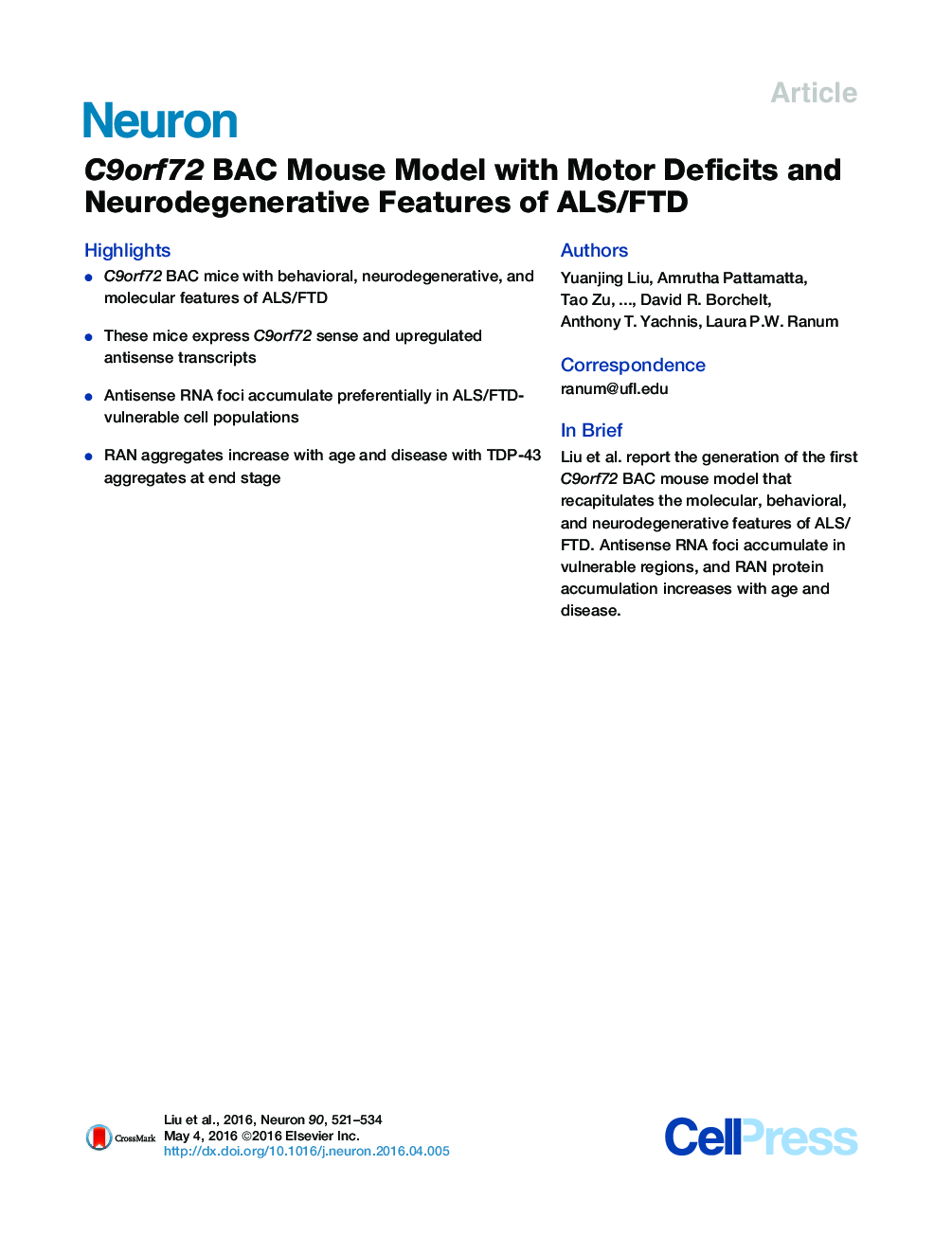| Article ID | Journal | Published Year | Pages | File Type |
|---|---|---|---|---|
| 4320706 | Neuron | 2016 | 14 Pages |
•C9orf72 BAC mice with behavioral, neurodegenerative, and molecular features of ALS/FTD•These mice express C9orf72 sense and upregulated antisense transcripts•Antisense RNA foci accumulate preferentially in ALS/FTD-vulnerable cell populations•RAN aggregates increase with age and disease with TDP-43 aggregates at end stage
SummaryTo define how the C9orf72 GGGGCC expansion mutation causes ALS/FTD and to facilitate therapy development, a mouse model that recapitulates the molecular and phenotypic features of the disease is urgently needed. Two groups recently reported BAC mouse models that produce RNA foci and RAN proteins but, surprisingly, do not develop the neurodegenerative or behavioral features of ALS/FTD. We now report a BAC mouse model of C9orf72 ALS/FTD that shows decreased survival, paralysis, muscle denervation, motor neuron loss, anxiety-like behavior, and cortical and hippocampal neurodegeneration. These mice express C9orf72 sense transcripts and upregulated antisense transcripts. In contrast to sense RNA foci, antisense foci preferentially accumulate in ALS/FTD-vulnerable cell populations. RAN protein accumulation increases with age and disease, and TDP-43 inclusions are found in degenerating brain regions in end-stage animals. The ALS/FTD phenotypes in our mice provide a unique tool that will facilitate developing therapies targeting pathways that prevent neurodegeneration and increase survival.
